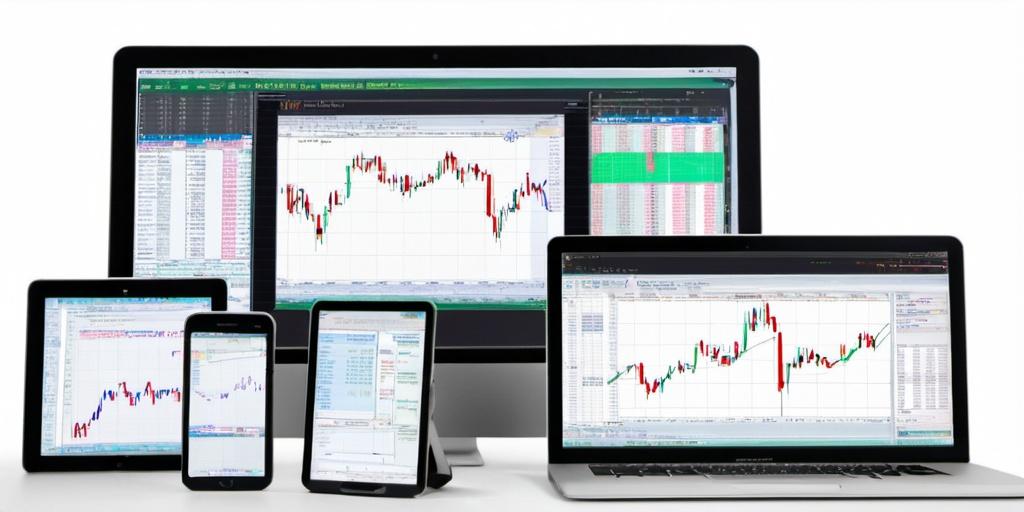Learn more about Interactive Brokers (IBKR with API) Autotrading

Getting Started with Interactive Brokers (IBKR) Autotrading
Interactive Brokers, often abbreviated as IBKR, is a widely respected name in the trading world. Known for its comprehensive API, it offers robust tools for traders looking to streamline their operations. This broker caters to a variety of trading styles, from the casual investor to the seasoned professional. The API enables users to automate trades, extract market data, and more, all while potentially saving time and minimizing human error.
If you’re already dipping your toes in the trading pool, you might have heard about autotrading with IBKR. It’s like having your very own Wall Street wizard without the need to bribe anyone with three martinis. The prospect of automating your trading strategies can be enticing, but it’s vital to approach this with some knowledge and preparation.
Understanding the IBKR API
Before jumping into the world of autotrading with IBKR, understanding the API is key. The IBKR API allows developers to design custom trading applications in various programming languages such as Python, Java, and C++. It’s like speaking multiple languages but for computers. This lets you execute trades, retrieve account information, and get market updates without having to stare at the screen all day.
The API facilitates different types of data streaming. Real-time streaming data enables high-frequency trading, while historical data is useful for back-testing strategies. Be it Forex, equities, or futures, the API has got most markets covered. It’s good to note that while the API is powerful, it requires some coding chops to fully utilize.
Setting Up Your Environment
Embarking on this autotrading journey means setting up your environment first. Start by downloading the IBKR Trader Workstation (TWS) and the IB Gateway. These two programs are your window into IBKR’s data world. They enable access to the IBKR API, which in turn allows your applications to connect to IBKR’s servers.
Then, it’s time to choose your programming language. Many traders prefer Python due to its simplicity and vast array of libraries tailored for financial analysis. It’s the trading world’s equivalent of sliced bread. Java and C++ are also popular, offering more control and performance but with a steeper learning curve.
Implementing Your Trading Strategy
Once your setup is ready, the next step is implementing your trading strategy. Whether you’re a proponent of momentum trading, scalping, or the ever-mysterious turtle trading, your strategy needs to be clear and well-defined. Codifying your strategy involves translating it into a series of logical steps that a computer can understand. This could involve determining entry and exit signals, setting up your risk management parameters, and defining the financial instruments you’re interested in.
It’s also crucial to test your strategy. Backtesting is like putting your strategy through a time machine. You can see how it would’ve performed in the past without risking your hard-earned cash. Just like you wouldn’t buy a car without a test drive, you don’t want to code a strategy without backtesting it.
Challenges and Considerations
Autotrading, much like any other venture, has its challenges. Technology, despite our best efforts, can be fickle. Network issues, server downtimes, or just plain old bugs can mess up your plans faster than you can say “margin call.” It’s important to have some form of monitoring and error handling in your code to catch and respond to these hitches.
Moreover, while the idea of setting trades on autopilot is tempting, keeping a watchful eye on your strategies is prudent. Markets are as predictable as a cat on catnip, and what worked last month might not work today. Regular adjustments and updates to your strategies might be necessary to keep them effective.
Security Concerns
Security is paramount whether you are manually trading or using algorithms. The trade-off with convenience and automation is increased exposure to cyber threats. Always use secure and encrypted connections to protect your data and API keys like you’d guard your grandma’s secret cookie recipe. Avoid storing sensitive data in plain text and regularly update your software to patch any potential vulnerabilities.
Final Thoughts
Interactive Brokers with its API opens a world of possibilities for traders looking to dive into autotrading. It upgrades your trading arsenal with automation tools that can save time, enhance efficiency, and possibly let you sleep in while your algorithm trades the markets. However, remember that with great power comes great responsibility. It’s vital to test thoroughly, monitor regularly, and always be prepared to revisit and revise your strategies. After all, in the world of trading, the only constant is change—and maybe the coffee pot at a trader’s desk.